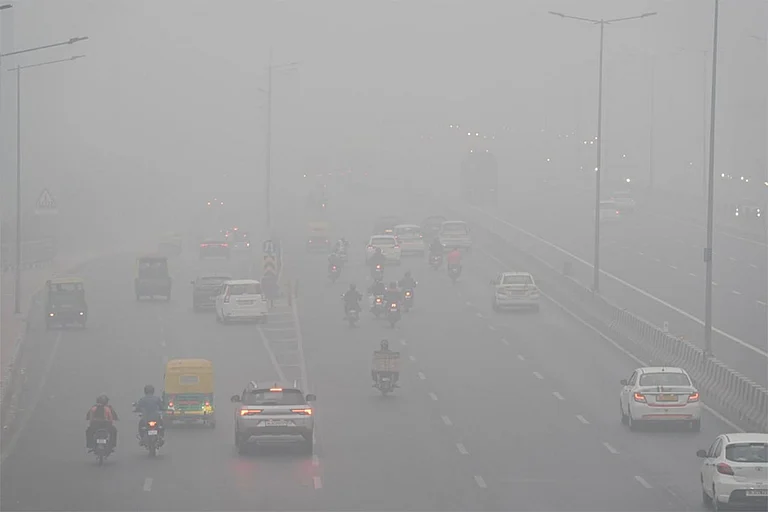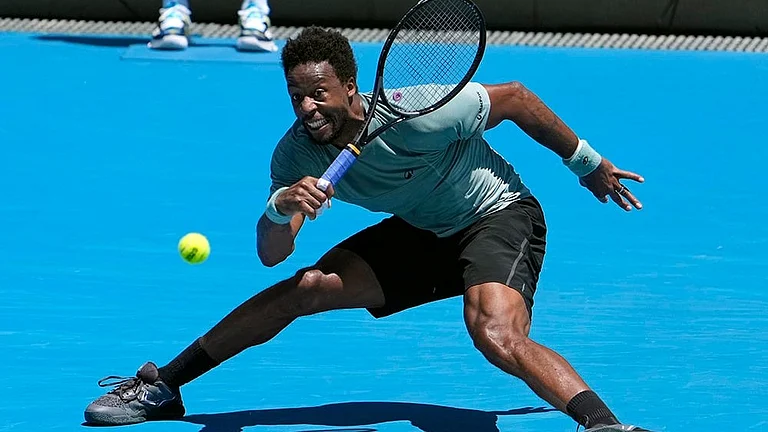The recent death of an Agniveer of the Indian Army —a soldier recruited under the Agnipath scheme— on duty in Siachen has once again brought the scheme into the spotlight.
Under the Agnipath scheme, soldiers with the rank of ‘Agniveer’ are recruited for a period of four years, of whom only 25 per cent would be regularised at the end of four years and the rest would be let go. The Opposition has labelled it as an “insult to the heroes of India” while the Narendra Modi government argues that such accusations are baseless and irresponsible.
On October 21, Agniveer Gawate Akshay Laxman from Maharashtra died in Siachen. The Army’s Ladakh-based 14 Corps paid tribute to him and attributed his death to “medical complications arising from high-altitude conditions”.
Earlier, on October 11, another Agniveer, Amritpal Singh, had died on duty —but by suicide— in the Rajouri sector of Jammu. As his death was deemed “self-inflicted”, he was not honoured with any military tributes. The death sparked a controversy.
“A young man was martyred for the country – no gratuity, no other military facilities for his service, and no pension to his family in martyrdom. Agniveer is a plan to insult the heroes of India,” said Congress leader Rahul Gandhi after many social media users, including veterans, said Laxman’s family would not receive a pension.
Navdeep Singh, an Army veteran and a lawyer, noted, “Ironically, the family of a temporary trainee civil employee, even if they die in an accident while on leave or by suicide, would be entitled to a family pension, but not the family of this Agniveer Battle Casualty in Siachen.”
However, Bharatiya Janata Party (BJP) IT Cell head Amit Malviya termed Rahul’s charge as “absolute trash and irresponsible”. He said, “Agniveer Gawate Akshay Laxman has laid down his life in the course of service and therefore is entitled to emoluments as a Battle Casualty. Accordingly, Laxman’s next of kin will receive the Rs 48 lakh non-contributory insurance, ex-gratia of Rs 44 lakh, Seva Nidhi contributed by the Agniveer (30 per cent), with an equal matching contribution by the Government and interest thereon.”
Amid such political debates, many veterans believe the scheme will have an adverse impact on the future of the Army. In an interview with Outlook’s Naseer Ganai, Major General (Retired) Yash Mor said the Agnipath scheme does not serve the best interest of the Indian military.
Mor told Outlook, “I am not a political person and I don’t represent any political party, but, as a veteran, I feel it’s my duty to speak up about the scheme. In my opinion, the scheme does not serve the best interests of the Indian armed forces. The scheme is not resonating well with rural youth who aspire to join the Army. Now, they are increasingly opting for careers in paramilitary forces and the police over the Army.”
Excerpts of the interview with Mor:
To what extent has the Agnipath scheme influenced the perception of rural youth regarding the Indian Army as a viable career choice?
I believe the way the scheme was introduced is inappropriate. For three years, there was no recruitment, leaving thousands of eager aspirants who dreamt of joining the Indian Army disappointed. They couldn’t understand how their desired career suddenly turned into a four-year commitment.
My interactions with people and youths from various states indicate that able-bodied youth who once aspired to join the Indian Army are now choosing careers in paramilitary forces and state police. These options provide long-term job security, up to the age of 60, while Agniveer only offers a four-year commitment. After those four years, the future is uncertain.
My observations in the rural areas reflect this shifting preference. Earlier, joining the Army was always the top choice for those who wanted to wear a uniform and it held a unique respect and regard among the people who aimed for a career in uniformed services. I believe it takes 10,000 hours of training to make a soldier and here under the Agnipath scheme, a soldier retires after only four years of the service.
What are the health guidelines and training requirements for soldiers deployed in high-altitude areas like Siachen?
Individual soldiers are not deployed to Siachen; they go as part of a unit. Each unit undergoes rigorous training and preparation for three to four months before the deployment. There is no scenario where a soldier bearing a specific name is deployed to Siachen. A soldier is always assigned to a unit, and if that unit happens to be deployed to Siachen or any other location, the soldier accompanies it. The unit is under the command of a colonel, and in the case of an infantry unit, it consists of 800 soldiers. Deployment at Siachen follows a roster system to ensure organisational structure and planning. Usually, a unit’s turn for deployment occurs after 12 to 15 years.
When a unit is slated for deployment to Siachen, an extensive training process is initiated well in advance. This process is aimed at preparing the unit mentally and physically for the challenging posting, taking place over the three to four months preceding deployment. Once the unit is ready to move, they are stationed at the Siachen training school. There, the entire unit undergoes three to six months of training, and then they are provided with new equipment and clothing to meet the demands of the weather. This entire process is carried out with the complete military professionalism.
The comprehensive training regimen includes mental, physical, and all necessary aspects required for such a posting before the actual deployment. That is why our casualties at Siachen have significantly decreased. In the past, we suffered losses due to the harsh weather conditions. However, improved clothing, better physical and mental training, and enhanced living conditions have reduced the causalities significantly.
I must tell you that being posted at Siachen is a source of pride for every soldier. Everyone aspires to it. The Siachen medal holds considerable value as a symbol of this challenging assignment. Also, the remuneration and allowances for soldiers stationed at Siachen are highly attractive, making it a unique opportunity that nobody wishes to miss.
You’ve mentioned that it takes 10,000 hours of training to make a soldier. Could you elaborate on this?
Yes, the rationale behind this statement lies in the substantial amount of hard work, effort, and time required to mould an individual into a soldier. Following recruitment, when a person is first deployed within a unit, they can be classified as soldiers. But they are sepoys at this stage. However, to attain the rank of a section commander or platoon commander, or to operate heavy equipment such as an anti-tank guided missile (ATGM), a tank, an artillery gun, or an air defence gun, an extensive investment of time and training is indispensable and needed. This commitment is no less than 10,000 hours.
How does the Indian Army differentiate its policies regarding military funerals for soldiers?
It is straightforward. If one has died in combat, on the field, or in an accident, they receive a full military funeral. However, such a provision does not exist for those who have taken their own lives. Suicide is considered a crime and it is not expected of a soldier to end their own life. This policy has consistently denied funerals to suicide cases or those who have engaged in reckless behaviour like running amock.
Funerals are exclusively reserved for those who have passed away while fulfilling their duty — even in the event of illness. I remember my time in Leh where if someone succumbed to a heart attack, we arranged a professional funeral. The station commander was present at the hospital to pay their respects to the departed soul.
What are your thoughts on the Agnipath scheme and the Agniveers?
I wish they reverse the scheme. Or at least, they retain 75 per cent and relieve 25 per cent. I am not a political person and I do not align with any party. However, as a veteran, it is my duty to speak with courage and conviction.
I deeply empathise with Agniveers and I wish they could secure regular jobs in the Army. If you examine the recruitment patterns in the Indian Army since British rule, you’ll find that a significant number of recruits came from regions like Himachal Pradesh, Haryana, and parts of Punjab. Jobs in the Army in these areas are highly respected. Once you secure a job in the Army, your social standing rises significantly in society. The city people won’t understand it. It’s a fact well understood by villagers and those who have been associated with the armed forces.
I can tell you that soldiers with a 12th-grade education often have spouses with postgraduate degrees. This is a common practice in these regions. The children of soldiers who retire as subedar majors (SM) or captains often go on to become officers in the Army. A career in the military has deep social and economic implications, offering regular pensions and opportunities for UN missions while in service. That is why military services had considerable respect. This respect, job security, and job satisfaction are lacking in the Agniveer services.


























